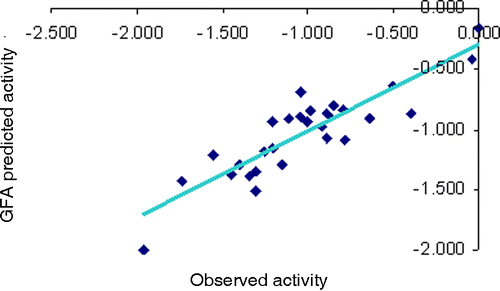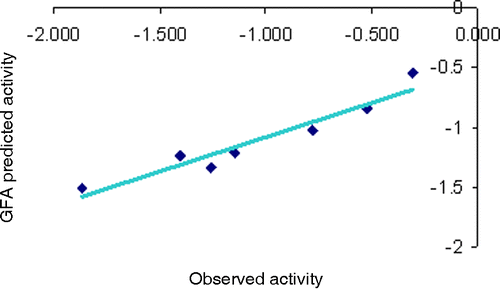Figures & data
Table I. Structures and biological activities of the training set molecules.
Table II. Structures and observed, predicted activities along with residuals for the test set molecules.
Table III. Descriptors used in the present study.
Table IV. Summary of the best equations selected from different GFA models. Equation (7) from Model C was selected to explain the observed PTP 1B inhibitory activity of formylchromone derivatives.
Figure 2 A graph of actual versus predicted activities of training set molecules using Equation (7) of Model C.

Figure 3 A graph of actual versus predicted activities of test set molecules using Equation (7) of Model C.

Table V. Results of randomized r2 for Equation (7) (Model C).
